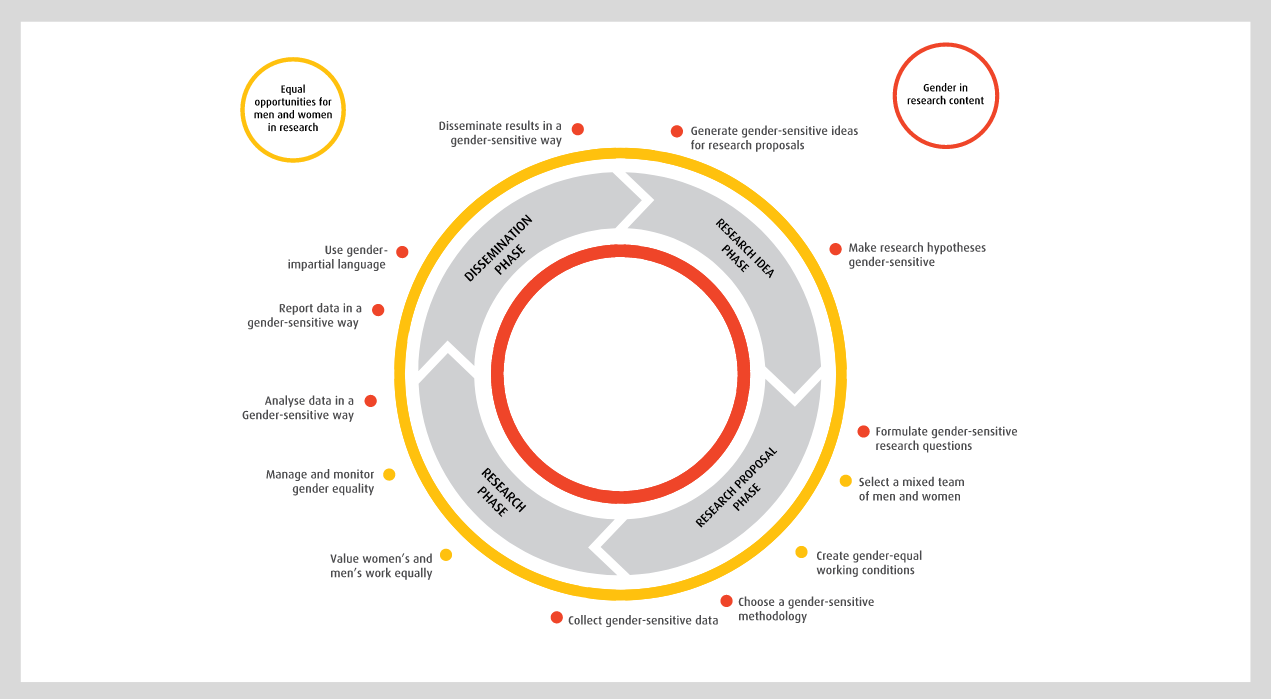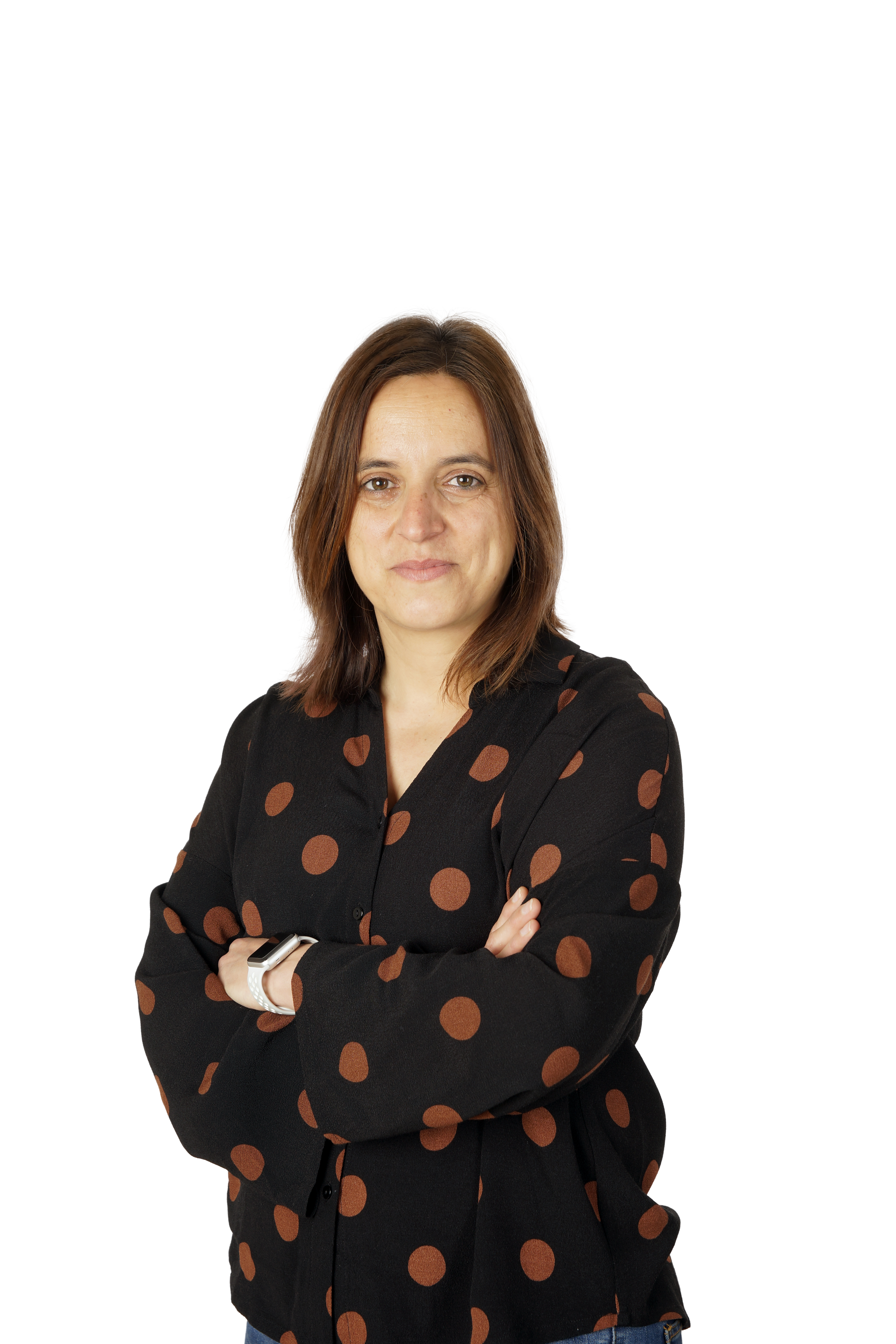A practical guide to integrating the gender perspective in research
Subject: Multidisciplinary
The new library guide has case studies, manuals and checklists for including the gender dimension in your research.
The UOC researchers Aurea Mota and Rachel Palmén helped select the content.
Is there gender parity in the research team? Did you take the gender dimension into account when determining the subject? Are the data presented broken down by sex or gender for analysis? Have you used inclusive language when writing the article and to disseminate it? The new library guide on the gender perspective in research includes a selection of guides, case studies and checklists to take into account when applying a gender perspective to research.
This gender-sensitive approach is increasingly important in research calls and projects, such as the European Commission's Horizon 2020 and Horizon Europe programmes. "We need to question the way we have been taught to do science", said Aurea Mota, a researcher in the Global Literary Studies Research Lab (GlobaLS) research group, who was involved in producing the library guide. Applying the gender perspective is "essential for obtaining more comprehensive and equitable knowledge, and for promoting real change in terms of gender equity in society," she added.
The first section of the library guide provides general resources for clarifying basic concepts and understanding the implications of adopting a gender-sensitive approach in research. These resources include GenPORT – an open and collaborative portal containing didactic and informative publications and materials that arose from a project coordinated by the GenTIC.
Rachel Palmén is a researcher in the UOC's IN3 Gender and ICT: Researching Gender in the Network Society (Genetic) research group and was also involved in producing the library guide. She pointed out that applying the gender perspective includes both the establishing specific research questions that include it, and ensuring that it forms part of each phase of the research and its dissemination.
In fact, according to Toolkit Gender in EU-funded research produced by the European Commission – the Spanish translation is included in the library guide – "gender must consistently be taken into account throughout the research cycle". This includes equal opportunities for men and women in research careers and decision-making, and the integration of the gender perspective in scientific content.
| Research idea phase |
|
| Research proposal phase |
|
| Research phase |
|
| Dissemination phase |
|

How can the gender perspective be included in a research project?
"Integrating the gender perspective in the content of research encompasses many different issues, which are often related to the discipline being studied," explained Palmén. She illustrated this with a series of examples. In the case of a pharmaceutical study, applying a gender perspective would entail including women as participants in clinical trials in order to obtain comprehensive results. And in research on speech recognition technologies, it might mean incorporating female voices into the application's database.
According to Mota, "good research should always include the contributions made by everyone who has played an important role in the production of the knowledge. In research on the history of computing, it is essential to refer to Ada Lovelace, for example." Mota also believes that aspects that have to date belonged to the "private" sphere must be incorporated into research, such as work related to care and the organization of family life: "they are directly related to the production of scientific knowledge."
The second section of the library guide focuses on applying the gender perspective to the content of research. It includes practical resources, with guides for how to apply them to different subject areas, such as the health sciences.
What is the gender dimension in research? Cases studies in interdisciplinary research and Gender Innovations in Science, Health & Medicine, Engineering, and Environment – two of the resources in the library guide – provide numerous examples of how to apply the gender perspective to research. They discuss cases in which research staff have established new approaches to a field of study, or broken down data by gender or sex to avoid biased results. These resources also help formulate new questions in fields of study that are sensitive to gender. Examples of cases::
| A study concludes that single women on low incomes and retired elderly women are particularly vulnerable to energy poverty. | In the field of food, there are studies showing that there are gender or sex differences in the consumption and production of food, and in the control and management of resources. | A Norwegian study relates commuting distances to the length of the full-time working day. It concludes that women are more likely to have shorter working hours due to their domestic and childcare responsibilities. | A case study examined whether facial recognition technology is able to detect attributes by gender or sex. |
A roadmap for including the gender perspective in research
The UOC 2020-2024 Gender Equality Plan aims to reduce inequalities in all areas of the university in order to avoid passing on biased knowledge, and to enhance the profile of female researchers. The initiatives planned include awareness-raising of research staff in order to include the gender perspective in the work they do.
The final section of the library guide provides resources for considering the issue in greater depth, including the UOC Equality Unit collection, which contains a bibliographical selection of documents on equality plans and the gender perspective. It also provides a link to the UOC Language Service's page providing help when writing inclusive texts.
The library guide is available in Library Guides section of the Library, and on the UOC portal, in the Global impact #2030 Agenda / Equity / Gender equality section.
Experts
Mireia Castillón
Operative subgroup: Law and Political Science resource manager, vocational training, gender perspective Operative group: Library for Learning



